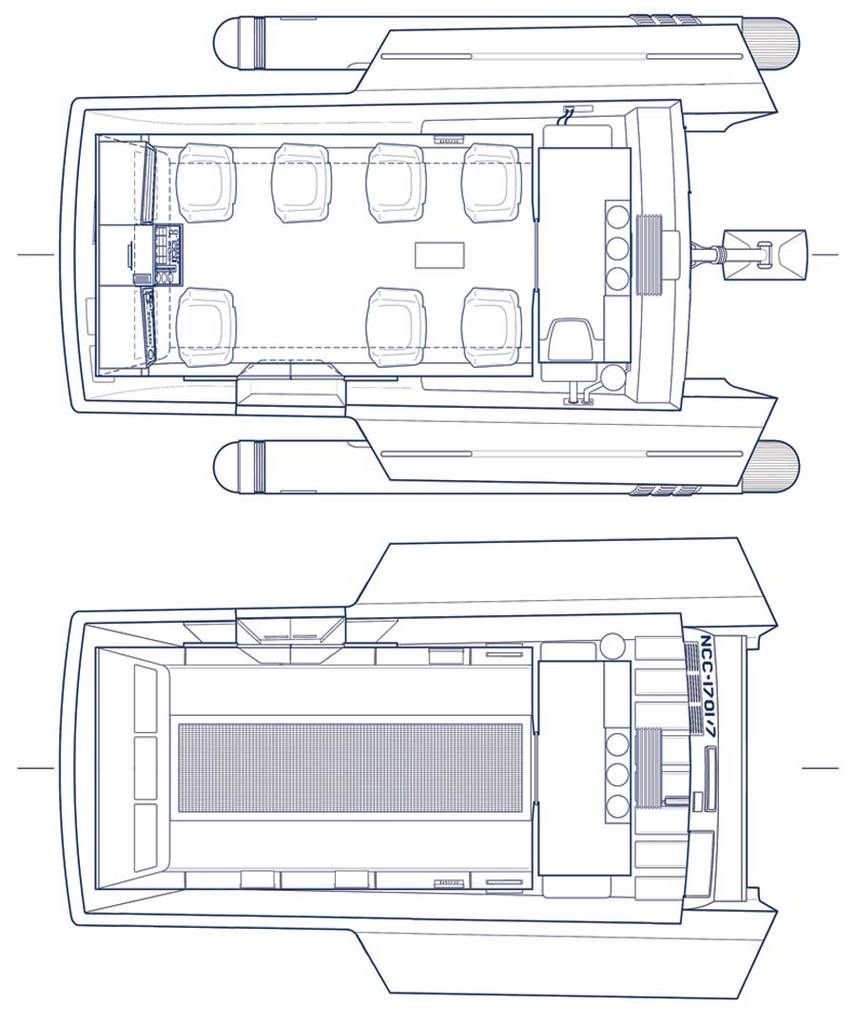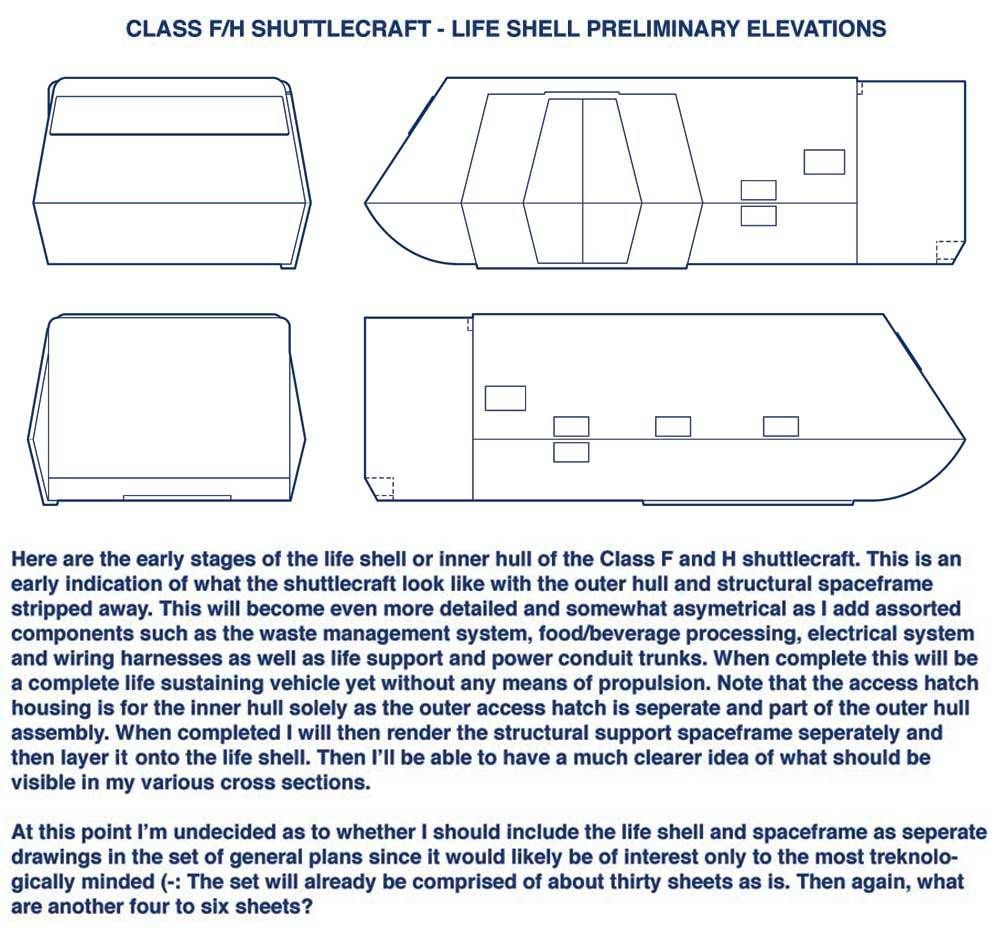Re: My TOS shuttelcraft (continued)...
So, the TAS craft is to be relatively compact? And perhaps capable of being carried inside the Enterprise as the result?
I sort of like those aspects of the TAS episode (mainly the interior shots) that indicate a relatively large craft, as this gives more credence to the "detached" mission far away from the mothership. The larger the craft, the greater the crew comfort on long solo missions; the bigger the engines for credible deep space performance; and the greater the amount of comforting bulk (and possible onboard weaponry) against the evils of outer space.
Mark Wilson did a take on this for the USS Aliquippa blueprints. Here's what I doodled for the interiors, and for the funny way the aft end of the craft seems to behave when our heroes step out:

Giving the craft a cabin that has standing height inside will result in something of a mid-23rd century runabout - only with the machinery underfloor rather than above or aft of the cabin. Most of the tacky-looking "window area" could be anti-glare paint instead, with smaller portholes of Class F style sitting in the middle of the painted area.
And by having the aft end be a hinged step/ramp, one excuses the strangely slanted stern and the vertical wall we see in the egress scene, as well as the less than spaceworthy-looking sliding doors that disappear into the side walls. The doors would be but internal collapsible bulkheads, with several more at various points of the cabin length. And the crew and cargo would have a reasonable means of accessing the surface from the high-perched cabin.
Not that I'd have anything against this smaller scoutcraft interpretation or anything. It's just that I'd like to see the larger concept tackled by you, too, since the results usually are so impressive...
Timo Saloniemi
So, the TAS craft is to be relatively compact? And perhaps capable of being carried inside the Enterprise as the result?
I sort of like those aspects of the TAS episode (mainly the interior shots) that indicate a relatively large craft, as this gives more credence to the "detached" mission far away from the mothership. The larger the craft, the greater the crew comfort on long solo missions; the bigger the engines for credible deep space performance; and the greater the amount of comforting bulk (and possible onboard weaponry) against the evils of outer space.
Mark Wilson did a take on this for the USS Aliquippa blueprints. Here's what I doodled for the interiors, and for the funny way the aft end of the craft seems to behave when our heroes step out:

Giving the craft a cabin that has standing height inside will result in something of a mid-23rd century runabout - only with the machinery underfloor rather than above or aft of the cabin. Most of the tacky-looking "window area" could be anti-glare paint instead, with smaller portholes of Class F style sitting in the middle of the painted area.
And by having the aft end be a hinged step/ramp, one excuses the strangely slanted stern and the vertical wall we see in the egress scene, as well as the less than spaceworthy-looking sliding doors that disappear into the side walls. The doors would be but internal collapsible bulkheads, with several more at various points of the cabin length. And the crew and cargo would have a reasonable means of accessing the surface from the high-perched cabin.
Not that I'd have anything against this smaller scoutcraft interpretation or anything. It's just that I'd like to see the larger concept tackled by you, too, since the results usually are so impressive...
Timo Saloniemi



